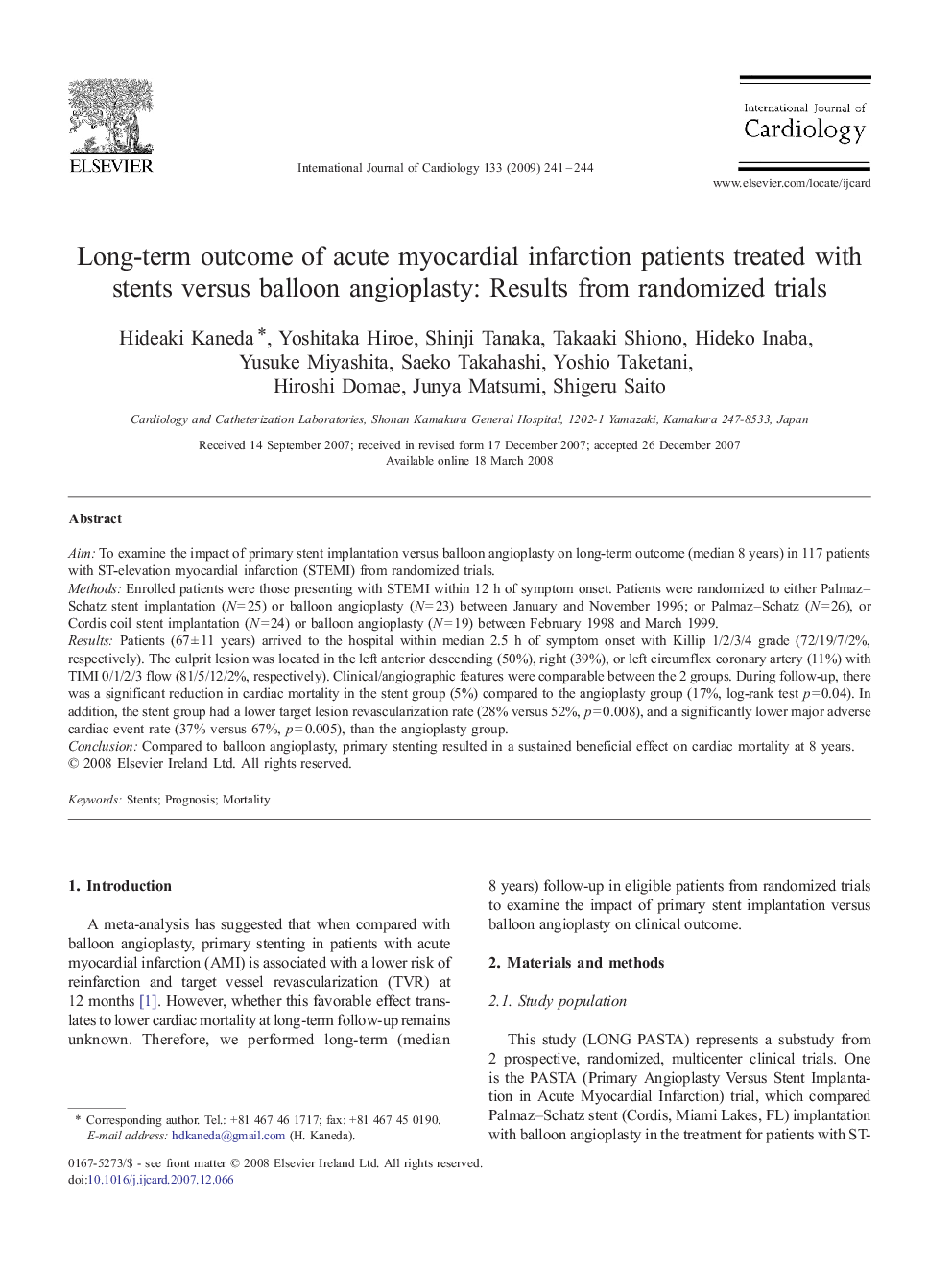| Article ID | Journal | Published Year | Pages | File Type |
|---|---|---|---|---|
| 2932695 | International Journal of Cardiology | 2009 | 4 Pages |
AimTo examine the impact of primary stent implantation versus balloon angioplasty on long-term outcome (median 8 years) in 117 patients with ST-elevation myocardial infarction (STEMI) from randomized trials.MethodsEnrolled patients were those presenting with STEMI within 12 h of symptom onset. Patients were randomized to either Palmaz–Schatz stent implantation (N = 25) or balloon angioplasty (N = 23) between January and November 1996; or Palmaz–Schatz (N = 26), or Cordis coil stent implantation (N = 24) or balloon angioplasty (N = 19) between February 1998 and March 1999.ResultsPatients (67 ± 11 years) arrived to the hospital within median 2.5 h of symptom onset with Killip 1/2/3/4 grade (72/19/7/2%, respectively). The culprit lesion was located in the left anterior descending (50%), right (39%), or left circumflex coronary artery (11%) with TIMI 0/1/2/3 flow (81/5/12/2%, respectively). Clinical/angiographic features were comparable between the 2 groups. During follow-up, there was a significant reduction in cardiac mortality in the stent group (5%) compared to the angioplasty group (17%, log-rank test p = 0.04). In addition, the stent group had a lower target lesion revascularization rate (28% versus 52%, p = 0.008), and a significantly lower major adverse cardiac event rate (37% versus 67%, p = 0.005), than the angioplasty group.ConclusionCompared to balloon angioplasty, primary stenting resulted in a sustained beneficial effect on cardiac mortality at 8 years.
